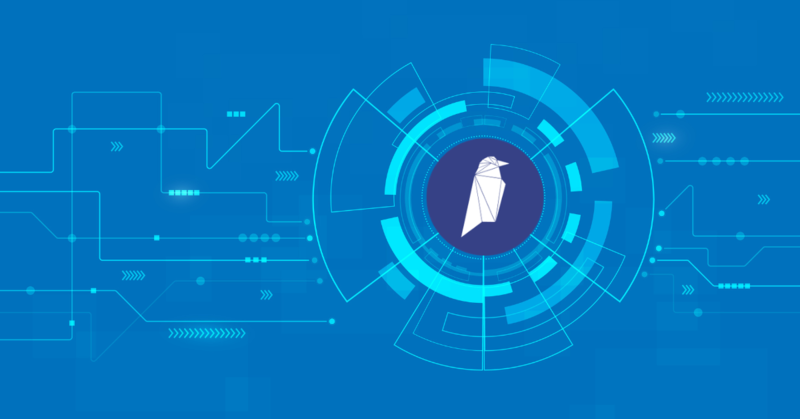Asset tokenization, a groundbreaking financial concept, has transformed the investment landscape by converting physical or digital assets into blockchain tokens. This innovation enhances accessibility and tradability, benefiting a wider range of investors. This article traces the path from Bitcoin, the pioneering cryptocurrency, to Ravencoin, a dedicated blockchain platform for asset tokenization, examining the evolution of security in this process. So, if you are looking for a website that connects you to investment education firms that can help you along your investment journey, consider visiting a reliable investment platform like the Immediate Circuit bot.
Bitcoin: The Pioneer
The Birth of Bitcoin and Its Impact on Asset Tokenization
In 2009, Bitcoin, created by the pseudonymous Satoshi Nakamoto, introduced the world to blockchain technology and digital scarcity. Bitcoin’s decentralized nature and the concept of a limited supply laid the foundation for asset tokenization. It showed that digital assets could possess intrinsic value and be traded peer-to-peer without intermediaries.
Limitations of Bitcoin for Asset Tokenization
While Bitcoin paved the way for asset tokenization, it has limitations. Its scripting language is relatively simple, making it challenging to create complex smart contracts. Additionally, Bitcoin’s primary purpose is as a store of value and medium of exchange, rather than facilitating asset tokenization.
Security Features of Bitcoin
Bitcoin is renowned for its robust security features, including proof-of-work consensus, which makes it highly resistant to attacks. Its long-standing history of security and immutability has set a benchmark for blockchain-based assets.
Beyond Bitcoin: The Evolution of Asset Tokenization
The Rise of Ethereum and Smart Contracts
In 2015, Ethereum introduced smart contracts, enabling developers to create decentralized applications (DApps) and custom tokens. This marked a significant leap in asset tokenization capabilities, as Ethereum’s programmable blockchain allowed for the creation of tokens with diverse functionalities.
Ethereum’s Contribution to Asset Tokenization
Ethereum’s ERC-20 standard became the go-to framework for creating tokens, opening the door to a plethora of asset tokenization use cases. These tokens could represent anything from real estate and art to stocks and commodities. However, Ethereum also faced scalability issues and high gas fees, which limited its suitability for certain applications.
Challenges Faced by Ethereum in Asset Tokenization
Ethereum’s scalability issues and ongoing transition to Ethereum 2.0 raised concerns about its ability to handle mass adoption. The network’s congestion and high transaction costs led to the exploration of alternative platforms dedicated to asset tokenization.
Ravencoin: A Deep Dive
What is Ravencoin?
Ravencoin is a blockchain platform launched in 2018, designed specifically for asset tokenization. Its primary objective is to make the creation and transfer of digital assets as straightforward as possible. It is open-source and built on a fork of the Bitcoin codebase, inheriting some of Bitcoin’s security features.
Unique Features of Ravencoin for Asset Tokenization
Ravencoin offers several unique features for asset tokenization, including asset issuance in a matter of minutes, low transaction fees, and the ability to easily create and transfer tokens representing various assets. Its asset layer provides a simplified framework for users to tokenize real-world assets.
Comparison Between Ravencoin and Bitcoin/Ethereum
Ravencoin distinguishes itself from Bitcoin and Ethereum by focusing exclusively on asset tokenization. While Bitcoin and Ethereum offer broader functionality, Ravencoin excels in the specific domain of creating and managing digital assets efficiently.
Asset Tokenization Use Cases
Real Estate: Turning Properties into Digital Assets
Asset tokenization is revolutionizing real estate by enabling property owners to tokenize their holdings. This fractionalizes ownership, making real estate investments accessible to a wider audience and enhancing liquidity.
Art and Collectibles: Fractional Ownership and Provenance Tracking
Tokenizing art and collectibles allows enthusiasts to invest in high-value pieces through fractional ownership. Blockchain also ensures transparency in provenance tracking, reducing the risk of art forgery and theft.
Stocks and Equity: Enhancing Liquidity and Accessibility
Traditional stocks and equity markets are adopting asset tokenization to increase liquidity and reduce the time and cost associated with settlement. This makes it easier for investors to trade shares in private companies and startups.
Security in Asset Tokenization
Security Challenges in the World of Tokenized Assets
Tokenized assets are not immune to security threats. Hacks, fraud, and regulatory compliance issues pose significant risks. Ensuring the security of tokenized assets is paramount to their success.
How Ravencoin Addresses Security Concerns
Ravencoin takes security seriously by inheriting some of Bitcoin’s security features, such as the use of a robust proof-of-work algorithm. Additionally, the simplicity of Ravencoin’s asset creation process reduces the risk of coding errors that can lead to vulnerabilities.
Best Practices for Securing Tokenized Assets
Implementing best practices, such as multi-signature wallets, thorough auditing of smart contracts, and compliance with regulatory standards, is essential for safeguarding tokenized assets.
Future Trends and Challenges
The Ongoing Evolution of Asset Tokenization
Asset tokenization continues to evolve, with new platforms and standards emerging. Interoperability between different blockchains and regulatory developments will shape its future.
Regulatory Implications and Compliance
Regulatory frameworks are still catching up with the fast-paced world of asset tokenization. Compliance with local laws and international regulations is crucial for the legitimacy and long-term success of tokenized assets.
Potential Challenges and Obstacles on the Horizon
Scalability, interoperability, and security will remain challenges in the asset tokenization space. Overcoming these obstacles will be essential for mainstream adoption.
Conclusion
In conclusion, asset tokenization has come a long way from its roots in Bitcoin to specialized platforms like Ravencoin. It has the potential to revolutionize various industries by increasing accessibility, liquidity, and transparency. However, ensuring security and navigating regulatory complexities are essential steps in unlocking the full potential of tokenized assets in the global financial landscape. As asset tokenization continues to evolve, its impact on the world of finance will undoubtedly be profound.
